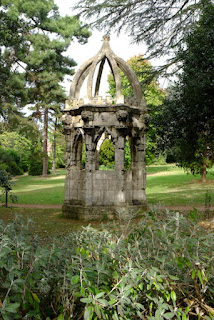Harrogate, Yorkshire

Hotel town Harrogate is well supplied with large hotels, many dating to the town’s boom in the late-19th century – or even before, the spa being well established by the early-18th. One witness to the town’s earlier life as a watering places was the traveller redoubtable Celia Fiennes, who visited in 1697 and recorded that she could not force her horse to come near the ’Sulpher or Stincking Spaw, not improperly term’d’.* She tried a couple of quarts of the noxious water and found these doses to be ‘a good sort of Purge if you can hold your breath so as to drink them down’. The hotels are variously classical, Italianate, or a sort of free style with many bays, prominent gables, and mansard roofs. My photograph shows the Crown, which is in a mixture of styles, and has a long history. Before the current building was put up, there had been a hotel here for a long time, even before the Crown was owned by the Thackwray family form 1740. Lord Byron, who stayed in 1806, was one of the best know...





